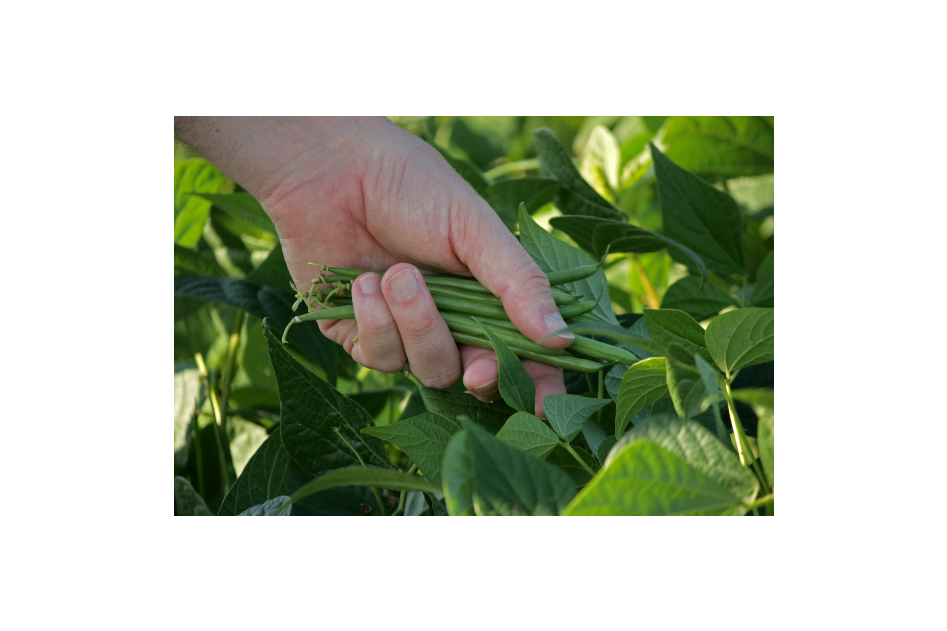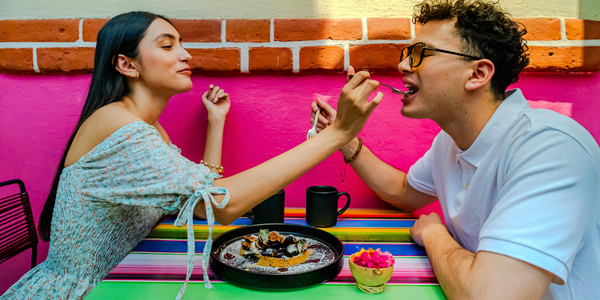What’s the Difference Between Green Beans and Haricot Verts?

Storytime! I'll be honest. I judge ingredients by their names. When it comes to simple vegetables, like lettuce or tomatoes, I generally think they're good staples that are cheap and widely-used. Why? Because that's the truth in most time. When I was younger and first heard the phrase haricot verts, I assumed it was a fancy ingredient that had to be fetched from the distant corners of a French farm.
Nine-year-old me heard the name on a French restaurant menu and immediately wanted to try them. Imagine my surprise, then, when I was presented a platter of these things...only to discover that they looked like green beans. Green beans aren't fancy. You can find them in cans from Jolly Green Giant. They're in green bean casserole, for cryin' out loud!
Being a young girl who was just starting to flex her pretention, I pitched a fit and pouted over having to eat what I thought were stupid ol' green beans. My mom rolled her eyes, knowing that this would happen. Either way, I ended up having to begrudgingly eat them because that's exactly what kids end up doing when served a food they don't want to eat.
I remember being perplexed about this all. Is there a difference between green beans and their fancy French counterparts? Was I right to throw a tantrum over this at a restaurant? While most people can tell you that my tantrum wasn't warranted because I was an idiot kid, they usually won't be able to tell you whether there's a difference...oor what that difference is.
Yes, There's A Difference!

Let's start by getting things straight. When you first look at chopped green beans compared to haricot verts, it's hard to imagine that there could possibly be a difference. I mean, they look almost identical when they're chopped up. Believe it or not, there are differences and using the wrong one can cause your recipes to turn out less than stellar. So, there is a difference.
Green Beans vs. Haricot Verts
The French term "haricot verts" literally translates into "green beans," so if you were hoping for a different term, you're out of luck. It's basically French versus American green beans here. The similar names don't mean they're identical, though. These important differences below are what aspiring chefs should be aware of:
- Haricot verts are longer and thinner than American green beans. This is the most noticeable difference between the two. Some also suggest that there may be coloration differences, but that's up for debate.
- Green beans are less tender than their French counterparts. If you were hoping to get a better bite from American green beans, you're out of luck. French green beans offer a better, firmer texture.
- Haricot verts are also more heavily flavored than green beans. If you're looking for a distinctly "veggie" taste, opt for the French version.
- The recipes that call for each ingredient differ, too. French green beans are traditionally used for more gourmet recipes that focus on the flavor of the beans. Haricot verts are also typically cooked when fresh-picked. American green beans are often used in casseroles and bolster other flavors.
- Green beans are more likely to be found canned. I personally have yet to see haricots in a can. Maybe that's just me, though!
Can You Just Use Immature Green Beans Instead of Haricot Verts?

The small differences between these two bean types might make it tempting to just switch things out, especially if you can't find French green beans near you. It's an understandable thought, and truthfully, there are some times where making the switch won't hurt your recipe too much. However, that doesn't mean that you should make habit of it. Heck, it doesn't even mean that you should expect your recipe to taste the same!
American green beans aren't as tender, nor are they as flavorful. They also are wider than haricot verts, which can mildly impact cooking time. Haricot verts also "hit" certain palates differently, so you might notice a little less sweetness than what you're used to. So while it's an option, it's definitely not ideal. Always go for the suggested ingredient whenever you can.
Are Green Beans Really That Bad?
Considering how much I talk up haricot verts, it's easy to assume that I'm trying to suggest that green beans are bad. Honestly, they're not. I genuinely enjoy both green beans and their French version. They're an ingredient that can be absolutely stellar in the right recipe and can be an amazing side dish when you pair them with the right dish. (Bacon-wrapped chicken, anyone?)
Classic, all-American green beans can be a superb and affordable ingredient in a typical Thursday night dinner. They're a mainstay in retro cooking because they are easy to cook with and also work well as a canned veggie. So, while haricot verts might get a lot of love from the foodie zone, please don't discount green beans just because they're old school.
Sign up for FD's newsletter
The freshest stories from the food and dating world every week.




